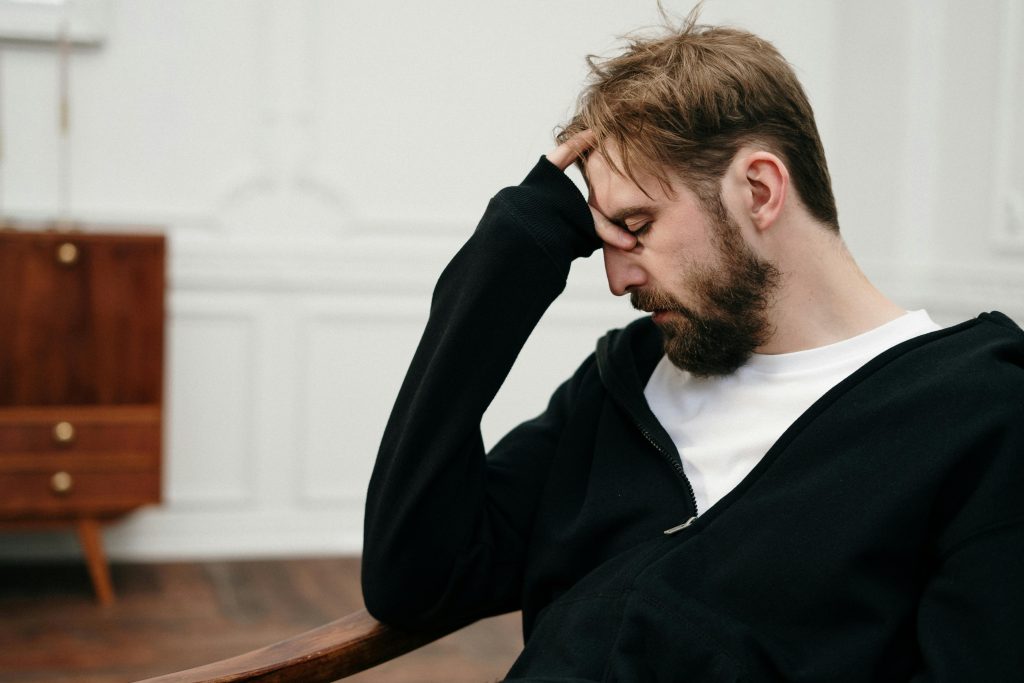June is Men’s Mental Health Month. While we often talk about men’s physical health, such as eating well, staying active, and getting regular checkups, mental health is too often left out of the conversation. Why is that? There’s a silent crisis happening: men are nearly four times more likely to die by suicide than women. This alarming reality highlights the need to break the silence, challenge the stigma, and make space for honest conversations about men’s mental health. Research has shown that men are far less likely to seek out mental health care compared to women. At first glance, it might seem like men simply experience fewer mental health issues but that’s not the case. In reality, many men are struggling but aren’t reaching out for help. This hesitation isn’t about a lack of need; it’s about stigma, social expectations, and the deeply rooted belief that asking for help is a sign of weakness. It’s time to change that. Let’s start by debunking some of the most common myths and misconceptions surrounding men’s mental health.
Myth #1: Depression Means Weakness Just like a broken bone or high blood pressure, depression is a real medical condition that deserves attention and care. So, what exactly is depression? According to the World Health Organization, depression is a common mental health condition that is characterized by a persistent low mood or a loss of interest and pleasure in activities over an extended period (2023). Importantly, depression is not a reflection of a person’s character or weakness. Depression can affect anyone, regardless of age, gender, or circumstances.
Myth #2: Talking About Mental Health Problems Won’t Help Wrong! Attending therapy can have a profound influence on a person’s belief system, emotional state and behaviour. In fact, research has shown that psychotherapy can also lead to structural and functional changes in the brain. Change happens when our brains create new connections and patterns. For therapy to work, the therapist and client work together to help the brain build these new connections, while weakening old, unhelpful ones. The therapist and client work together to create new ways of understanding the client’s experiences, which is called co-construction. By sharing and shaping these stories together, the client’s brain becomes better connected, which helps them think more clearly, understand themselves more deeply, and grow emotionally.
Myth #3: Men need to just tough it out. Mental health challenges are not something you can just “snap out of.” Like any serious health condition, they often need proper treatment and support. The good news is, with the right care, people can and do get better. Just like you wouldn’t expect to treat high blood pressure, a broken bone, or diabetes through willpower alone, mental health deserves the same level of care and understanding.
References
American Psychological Association. (2023). Overcoming depression: How psychologists help with depressive disorders. Apa.org. https://www.apa.org/topics/depression/overcoming
Barsaglini, A., Sartori, G., Benetti, S., Pettersson-Yeo, W., & Mechelli, A. (2014). The effects of psychotherapy on brain function: A systematic and critical review. Progress in Neurobiology, 114(114), 1–14. https://doi.org/10.1016/j.pneurobio.2013.10.006
Bilsker, D., Fogarty, A. S., & Wakefield, M. A. (2018). Critical Issues in Men’s Mental Health.
The Canadian Journal of Psychiatry, 63(9), 590–596.
https://doi.org/10.1177/0706743718766052
Men’s Health Month. (2025). National Alliance on Mental Illness (NAMI).
https://www.nami.org/get-involved/awareness-events/mens-health-month/?__cf_chl_tk=6
QZ.bzwiz1XgkSrf4oQGi5FQ_VNoNSsWRYSdi2EUqFU-1750861953-1.0.1.1OT87zAOiLNracDkAsQzvcGHrDK0_6nWaQ1lRQyRpyIs
Men and Depression: Unique Signs and Symptoms in Men. (2024, September 18).
HeadsUpGuys. https://headsupguys.org/depression-in-men/
World Health Organization. (2023). Depressive Disorder (depression). World Health
Organization; World Health Organization.
https://www.who.int/news-room/fact-sheets/detail/depression



